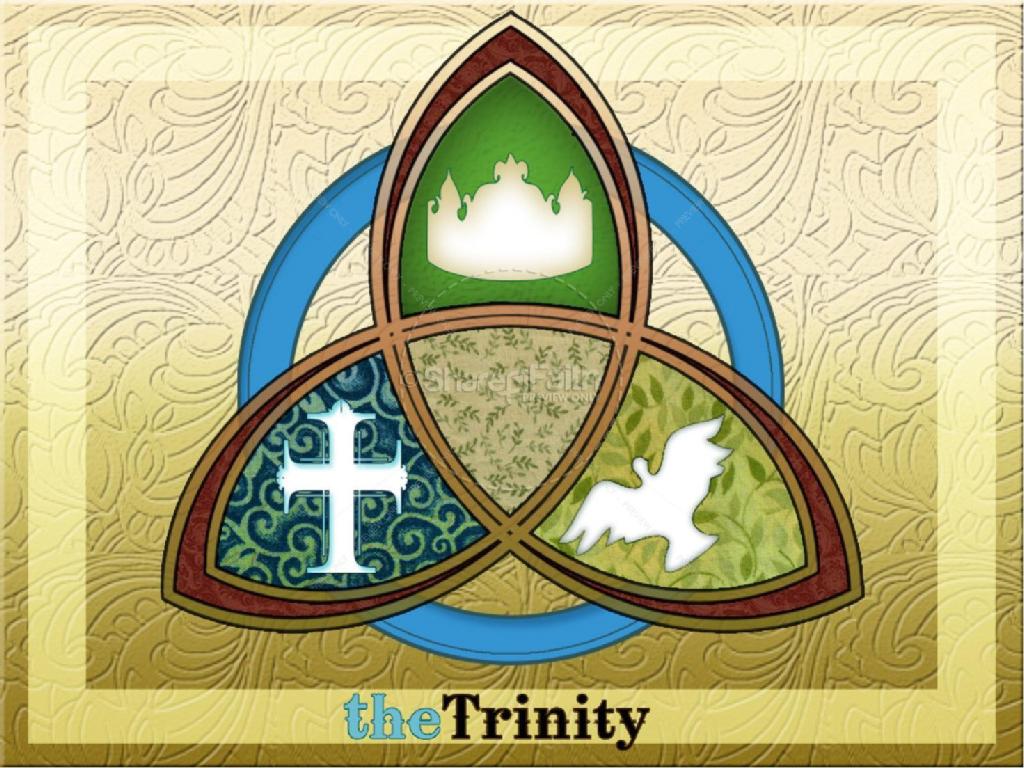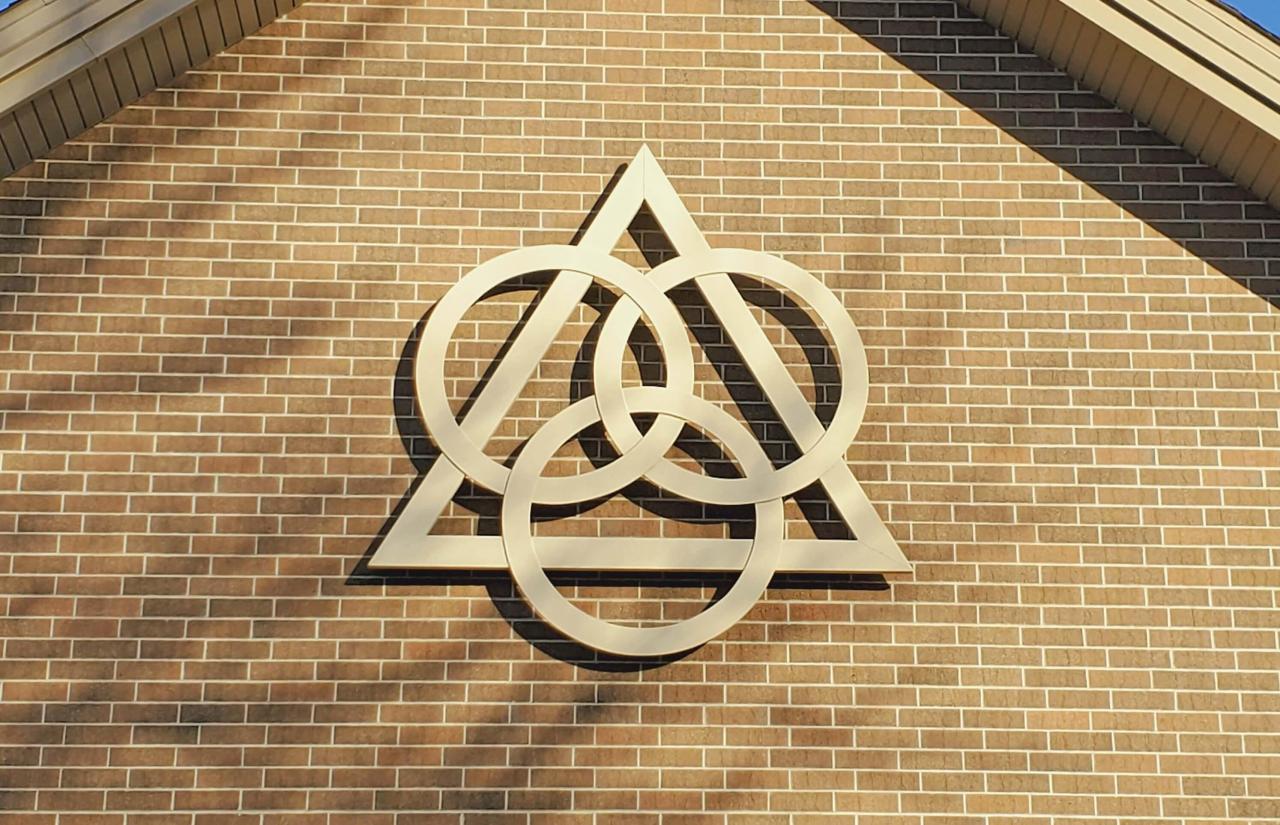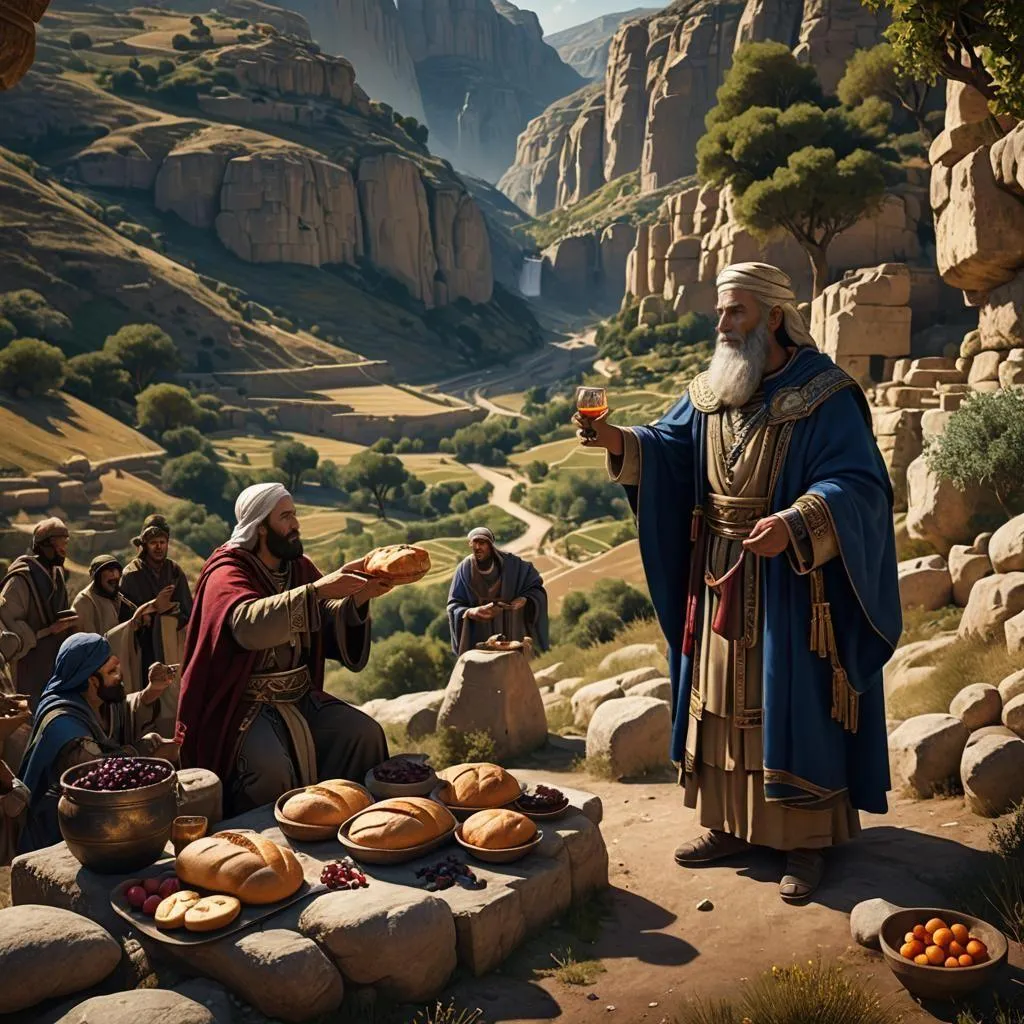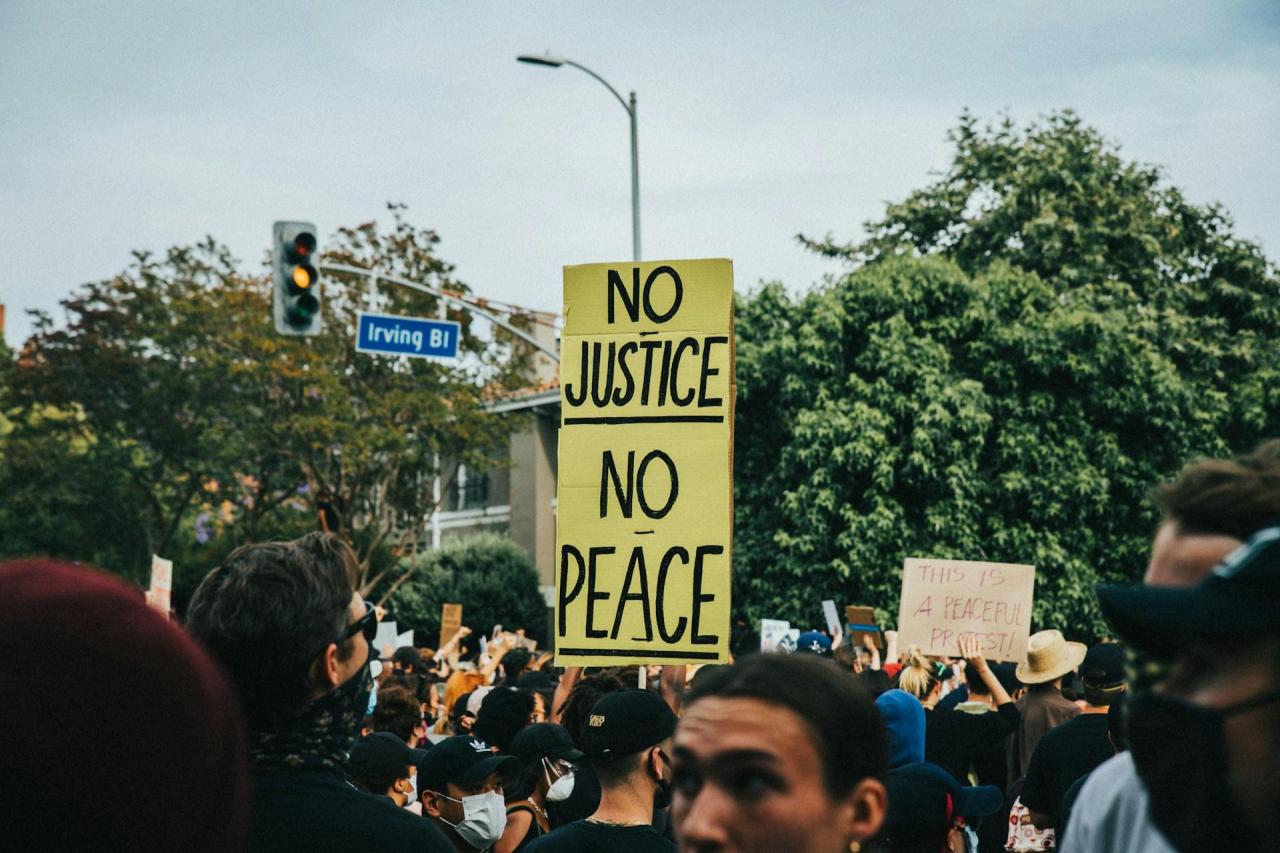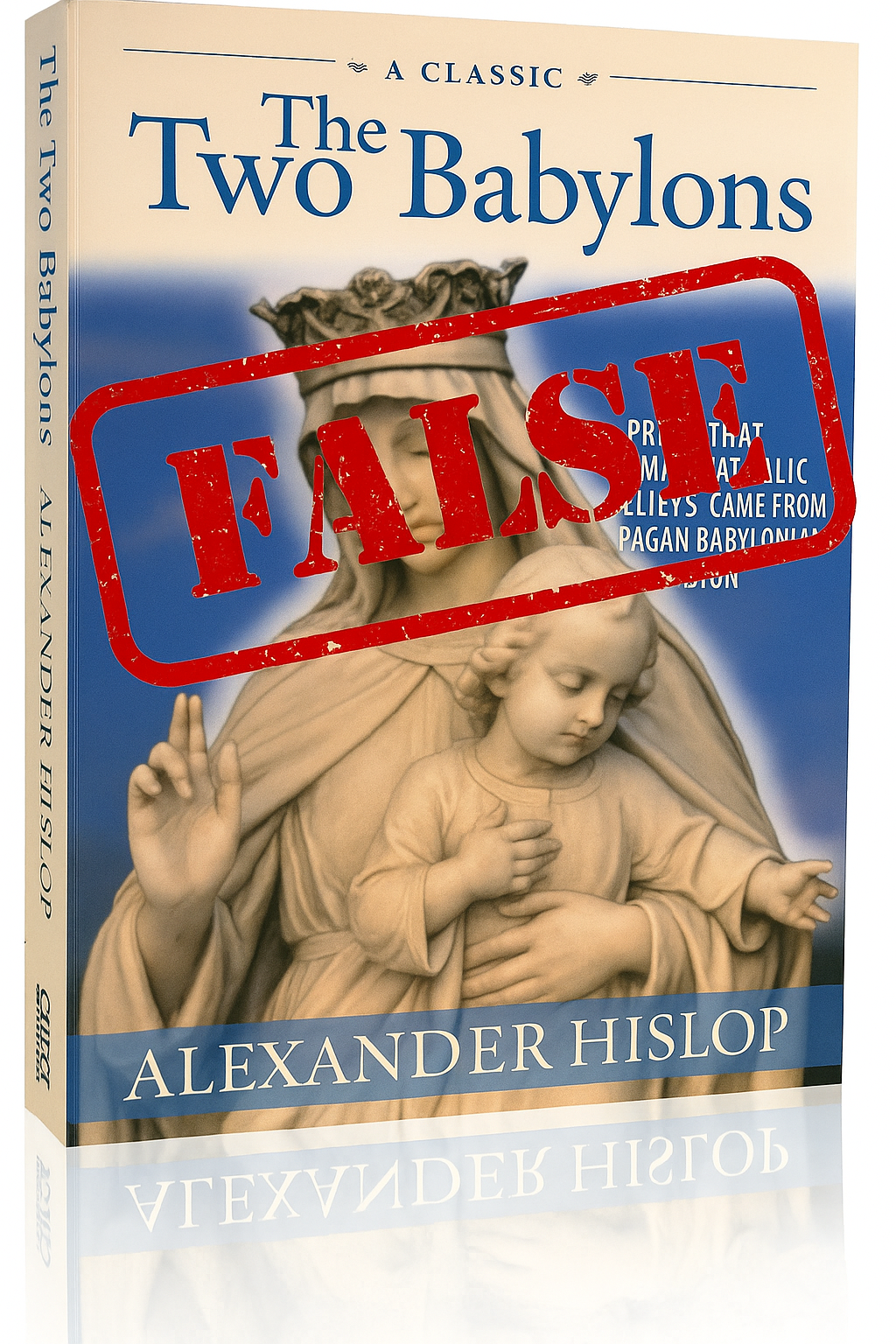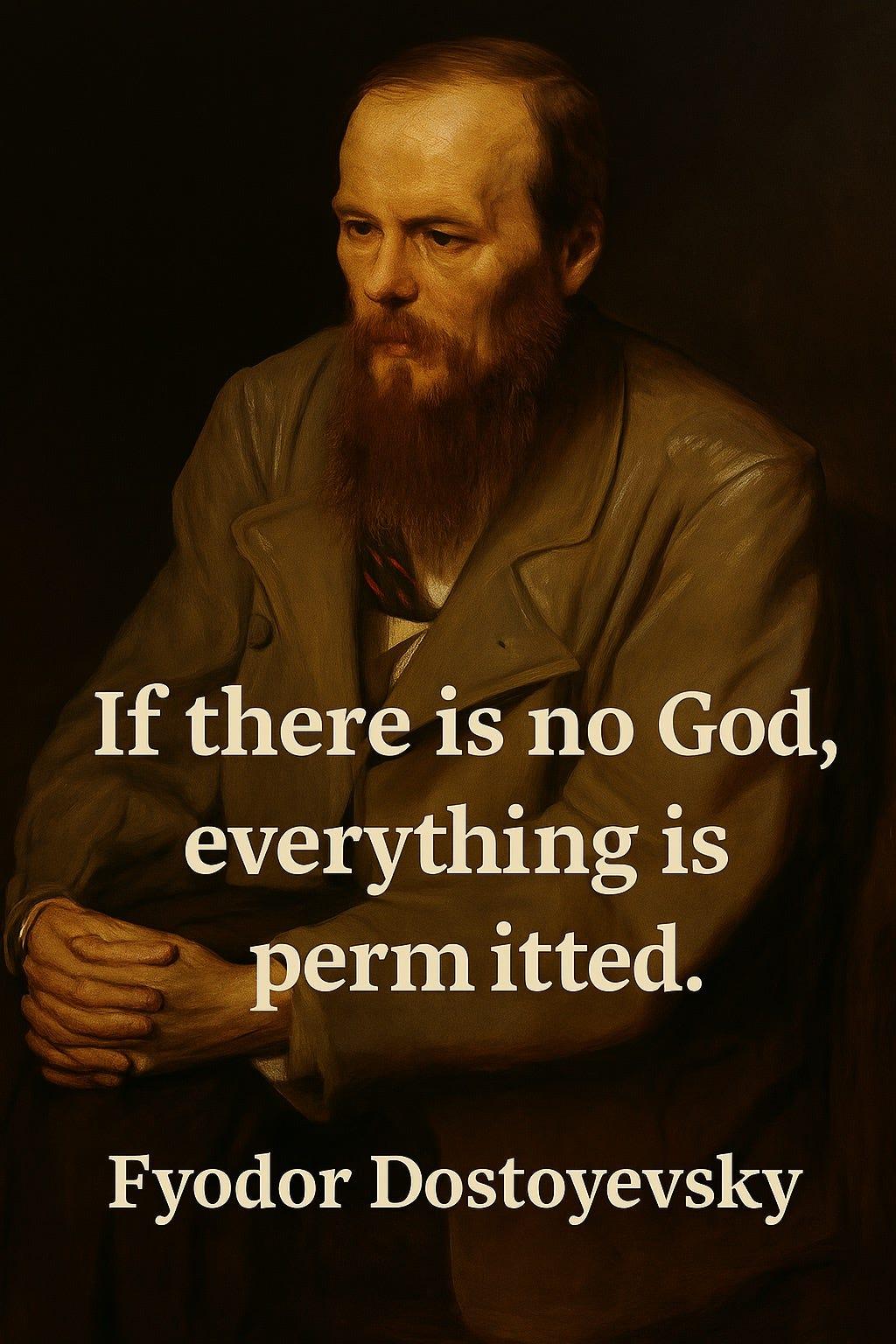What is Monarchical Trinitarianism?

Monarchical Trinitarianism, also referred to as the “Monarchy of the Father,” is a theological perspective that asserts the Father as the sole source (or monarch) within the Trinity. This view maintains a clear distinction of roles among the Father, the Son, and the Holy Spirit while upholding their unity in essence. It is essential to distinguish this from Monarchianism, a heretical belief condemned in the 4th century, which posited that God is a single person rather than three distinct persons.
The Eternal Begottenness of the Son
The term “created” used by the early pre-Nicene Fathers does not align with the Arian view, which posits that the Son was created ex nihilo (out of nothing), making Him a creature. As Arius infamously declared, “there was a time when the Son was not”. Rather, the Fathers articulated that the Son was begotten out of the Father, emphasising His divine origin and eternal existence within the Father’s bosom (cf. John 1:18 in Greek). As Justin Martyr explains, “For Christ is the first-begotten of God, and we have declared above that He is the Word of whom every race of men were partakers; and those who lived reasonably are Christians, even though they have been thought atheists” (Justin Martyr, First Apology, Chapter 46). This highlights that the Son, the Word, existed eternally with the Father before being begotten and manifested.
Similarly, Hippolytus expounds on this concept, noting that “God, subsisting alone, and having nothing contemporaneous with Himself, determined to create the world … For He was neither without reason, nor wisdom, nor power, nor counsel And all things were in Him, and He was the All. When He willed, and as He willed, He manifested His word in the times determined by Him, and by Him He made all things. … And thus there appeared another beside Himself. But when I say another, I do not mean that there are two Gods, but that it is only as light of light, or as water from a fountain, or as a ray from the sun. For there is but one power, which is from the All; and the Father is the All, from whom cometh this Power, the Word. And this is the mind which came forth into the world, and was manifested as the Son of God.” (Hippolytus, Against the Heresy of One Noetus, Chapter 10–11). Here, Hippolytus underscores the eternal existence of the Word within God, proceeding from the Father and being of the same essence.
The Procession of the Holy Spirit
The procession of the Holy Spirit from the Father is another essential aspect of Monarchical Trinitarianism. The Spirit, like the Son, derives His essence from the Father, ensuring that He is co-equal and consubstantial with the Father and the Son. Tertullian speaks to this procession in his work, Against Praxeas, explaining how the Word and Spirit derive their essence from the Father.
But still the tree is not severed from the root, nor the river from the fountain, nor the ray from the sun; nor, indeed, is the Word separated from God. … Now the Spirit indeed is third from God and the Son; just as the fruit of the tree is third from the root, or as the stream out of the river is third from the fountain, or as the apex of the ray is third from the sun. Nothing, however, is alien from that original source whence it derives its own properties. In like manner the Trinity, flowing down from the Father through intertwined and connected steps, does not at all disturb the Monarchy, while it at the same time guards the state of the Economy. (Tertullian, Against Praxeas, Chapter 8).
Looking at how Tertullian describes this doctrine, we can see how he has gone to lengths to carefully explain how the relationship within the Trinity exists together and relate to one another, while keeping intact the source and essence of divinity united and uncompromised. When we talk about these things, we use terms like “ontological” and “economy” to help to describe the Godhead. Ontology is the study of being, and what makes something what it is by nature. The economy of the Trinity refers to the outworking and activity of the divine Persons.
This points us to the distinction between the Father’s primacy and “monarchy” as the divine source, and the “economy” between the Persons in their roles in salvation and redemptive history. Ontologically the Persons of the Trinity are the same as they share in the same essence of the Father, and thus co-equal and co-eternal, but in terms of how they relate to one another and to humanity, there is a type of subordination. As Jesus said in John 5:19–23, “the Son can do nothing on his own, but only what he sees the Father doing; for whatever the Father does, the Son does likewise.”, similar also to how Jesus said that only the Father knows the hour of the End, and that the Son doesn’t know (Mark 13:32).
The One True God
Central to Monarchical Trinitarianism is the recognition of the Father as the One True God, or άυτόθεος (autotheos), meaning self-existent. He is the uncaused, unbegotten source of divinity, from whom the Son and the Spirit derive their being. The early Fathers were clear that this does not diminish the divinity of the Son and the Spirit but rather establishes the order within the Godhead. Origen articulates this succinctly in his De Principiis, “…it may be understood that the Son is not of a different goodness, but of that only which exists in the Father, of whom He is rightly termed the image, because He proceeds from no other source but from that primal goodness, lest there might appear to be in the Son a different goodness from that which is in the Father.” (Origen, De Principiis, Book 1, Chapter 2.13).
While Origen’s language reflects a certain subordination in terms of order or generation, not essence, it points to the Father’s role as the uncreated fountainhead of divinity. This view no doubt comes from the New Testament itself, from such verses as Hebrews 1:3, Philippians 2:6–8, and the following:
For ‘God has put all things in subjection under his feet.’ But when it says, ‘All things are put in subjection’, it is plain that this does not include the one who put all things in subjection under him. When all things are subjected to him, then the Son himself will also be subjected to the one who put all things in subjection under him, so that God may be all in all. (1 Corinthians 15:27–28).
The Distinction from Monarchianism
It is crucial to differentiate Monarchical Trinitarianism from Monarchianism, despite the similar sounding names. Monarchianism, which shares similar theology with Modalism/Sabellianism, was condemned as heresy in the 4th century. It denied the distinct personhood within the Godhead, positing that the Father, Son, and Holy Spirit are merely different modes or aspects of one God. This view was rejected by the early church for undermining the distinct personal relationships and the eternal generation and procession within the Trinity.
Monarchians were opposed by “Logos theologians”, such as Tertullian, Hippolytus, Clement of Alexandria, and Origen of Alexandria.
Catechism of the Orthodox Faith
The Orthodox Church holds more prominently to the Monarchy of the Father in their Trinitarian doctrines. According to the Catechism of the Orthodox Faith, the Monarchy of the Father is articulated as follows:
God the Father is neither begotten nor proceeds from any other Person, he is the cause, source and principle. This is called the Monarchy of the Father. (Catechism of the Orthodox Faith, 094)
The Father, the Son and the Holy Spirit share equal majesty as being the eternal, uncreated Savior and Lord. The Father is true God, the Son equally true God, and the Holy Spirit true God. This ontological or essential equality was expressed by the Church by the expression “homoousion” (of the same essence) to condemn Arianism and affirm that the Son is co-eternal and co-uncreated with the Father. This does not negate different roles or functions. (Catechism of the Orthodox Faith, 095)
In this view, when the Son says that “the Father is greater than I” (John 14:28), he is referring to the fact that the Father is the cause and origin. Various Church Fathers have understood this verse in this regard:
“The Son does not say, ‘My Father is better than I,’ lest we should conceive him to be foreign to his nature, but ‘greater,’ not indeed in greatness nor in time, but because of his generation from the Father himself” (St Athanasius, Orations against the Arians, 1.58)
“Since the Son’s origin (arche) is from the Father, in this respect the Father is greater, as cause and origin. This is why the Lord says, ‘My Father is greater than I.’ Indeed, what else does the word Father signify unless being the cause and origin of that which is begotten of Him?” (St Basil, Against Eunomius, 1.25)
“Superior greatness belongs to the cause, equality to the nature… To say that [the Father] is greater than [the Son] in his humanity is certainly true, but it is not the point here, since it is no wonder that God is greater than man” (St Gregory of Nazianzus, Oration, 30.7)
“If anyone says that the Father is greater in so far as He is the cause of the Son, we will not dispute this. But this, however, does not make the Son to be of a different essence” (St John Chrysostom, Homily, 70)
In summary, the perspective of the Orthodox Church, and various theologians in the early church, explain the Monarchy of the Father through His supreme greatness as the “cause, source, and principle” while simultaneously affirming the co-equality of the Persons within the Trinity, since they share the same divine essence. Anything “lesser” in the Son or Spirit is due to their cause, function or role rather than their ontological reality.
Biblical Foundations and Theological Consistency
The biblical foundation for Monarchical Trinitarianism is evident in Scriptures such as Proverbs 8:22–30, which speaks of Wisdom (often interpreted as a prefiguration of Christ) being brought forth before the creation of the world. The Apostle Paul in Colossians 1:15–17 refers to Christ as “the image of the invisible God, the firstborn over all creation. For by him all things were created”, affirming the Son’s role in creation and preexistence. Additionally, John’s Gospel affirms the divinity of Christ, “In the beginning was the Word, and the Word was with God, and the Word was God” (John 1:1).
These passages, alongside the teachings of the Ante-Nicene Fathers, confirm the historical orthodoxy of Monarchical Trinitarianism, which maintains the unity and co-equality of the Trinity while acknowledging the Father as the source. This theological framework provides a robust understanding of the relational dynamics within the Godhead, affirming the eternal generation of the Son and the procession of the Spirit from the Father, without compromising the divine essence shared among the three Persons.
In conclusion, Monarchical Trinitarianism, grounded in the early church’s teachings and biblical exegesis, offers a coherent and historically rooted articulation of the Christian doctrine of the Trinity. It emphasises the Father’s unique role as the source of divinity while affirming the full deity and consubstantiality of the Son and the Spirit, thus preserving the unity and diversity within the Godhead.
Sources & Further Reading
- Hippolytus of Rome: The Extant Works and Fragments: Dogmatical and Historical (Roberts-Donaldson translation) (earlychristianwritings.com)
- Justin Martyr: First Apology | Patristics.info
- CHURCH FATHERS: Against Praxeas (Tertullian) (newadvent.org)
- Catechism of the Orthodox Faith
- Monarchianism | Modalism, Sabellianism, Unitarianism | Britannica
- Sabellianism | Monarchianism, Modalism & Patripassianism | Britannica
- What’s the Difference between the Ontological and the Economic Trinity? (ligonier.org)
- The Relationship Between Jesus and Sophia | The Sacred Faith: Timeless Truths for Modern Minds
- CHURCH FATHERS: De Principiis, Book I (Origen) (newadvent.org)
- The Sacred Faith: Trinity Articles
Leave a comment Like Back to Top Seen 10.1K times Liked 0 times
Enjoying this content?
Support my work by becoming a patron on Patreon!
By joining, you help fund the time, research, and effort that goes into creating this content — and you’ll also get access to exclusive perks and updates.
Even a small amount per month makes a real difference. Thank you for your support!
Subscribe to Updates
If you enjoyed this, why not subscribe to free email updates and join over 853 subscribers today!
My new book is out now! Order today wherever you get books
Recent Posts
Luke J. Wilson | 20th May 2025 | Islam
You are not alone. Around the world, many Muslims — people who already believe in one God, pray, and seek to live righteously — are drawn to know more about Jesus (ʿĪsā in Arabic). Some have heard He is more than a prophet. Some have sensed His presence in a dream or vision. And some simply long to know God more deeply, personally, and truly. So what does it mean to become a Christian? And how can you take that step? This guide is for you. 1. What Christians Believe About God and Jesus ➤ One God, Eternal and Good Christians believe in one God — the same Creator known to Abraham, Moses, and the prophets. But we also believe God is more personal and relational than many realise. In His love, He has revealed Himself as Father, Son (Jesus), and Holy Spirit — not three gods, but one God in three persons. ➤ Jesus Is More Than a Prophet Muslims honour Jesus as a great prophet, born of the virgin Mary. Christians also affirm this — but go further. The Bible teaches that Jesus is the Word of God (Kalimat Allāh), who became flesh to live among us. He performed miracles, healed the sick, raised the dead — and lived without sin.Jesus came not just to teach but to save — to bring us back to God by bearing our sins and rising again in victory over death. 2. Why Do We Need Saving? ➤ The Problem: Sin All people — no matter their religion — struggle with sin. We lie, get angry, feel jealous, act selfishly, or fail to love God fully. The Bible says: “All have sinned and fall short of the glory of God.” (Romans 3:23) Sin separates us from God. And no matter how many good deeds we do, we can never make ourselves perfect or holy before Him. ➤ The Solution: Jesus Because God loves us, He did not leave us in our sin. He sent Jesus, His eternal Word, to live as one of us. Jesus died willingly, offering His life as a sacrifice for our sins, then rose again on the third day. “But God proves his love for us in that while we still were sinners Christ died for us.” (Romans 5:8) 3. How Do I Become a Christian? Becoming a Christian is not about joining a Western religion. It’s about entering a relationship with God through faith in Jesus Christ. Here is what the Bible says: ✝️ 1. Believe in Jesus Believe that Jesus is the Son of God, that He died for your sins, and that He rose again. “If you confess with your lips that Jesus is Lord and believe in your heart that God raised him from the dead, you will be saved.” (Romans 10:9) 💔 2. Repent of Your Sins Turn away from sin and ask God to forgive you. This is called repentance. It means being truly sorry and choosing a new way. “Repent therefore, and turn to God so that your sins may be wiped out.” (Acts 3:19) 💧 3. Be Baptised Jesus commands His followers to be baptised in water as a sign of their new life. Baptism represents washing away your old life and rising into a new one with Jesus. “Repent and be baptised every one of you in the name of Jesus Christ so that your sins may be forgiven.” (Acts 2:38) 🕊️ 4. Receive the Holy Spirit When you believe in Jesus, God gives you the Holy Spirit to live within you, guiding you, comforting you, and helping you follow His will. “You received the Spirit of adoption, by whom we cry, ‘Abba! Father!’” (Romans 8:15) 🧎 5. Begin a New Life As a Christian, you are born again — spiritually renewed. You begin to grow in faith, love, and holiness. You read the Bible, pray, fast, and gather with other believers. Your life is no longer your own; you now live for God. 4. What Does a Christian Life Look Like? Jesus said: “If anyone wants to become my followers, let them deny themselves and take up their cross and follow me.” (Matthew 16:24) This means: Loving God with all your heart Loving your neighbour — even your enemies Forgiving others ...
Luke J. Wilson | 05th May 2025 | Politics
When we think about David and Saul, we often focus on David’s rise to kingship or his battle with Goliath. But hidden within that story is a deep lesson for today’s generation about leadership, resistance, and the power of revolutionary love. At a recent youth training event (thanks to South West Youth Ministries), I was asked how I would present the story of David and Saul to a Christian teenage youth group. My mind turned to the politics of their relationship, and how David accepted Saul’s leadership, even when Saul had gone badly astray. David recognised that Saul was still God’s anointed king — placed there by God Himself — and that it was not David’s place to violently remove him. Gen-Z are more politically aware and engaged than previous generations, and are growing up in a world where politics, leadership, and social issues seem impossible to escape. We live in a world where political leaders — whether Trump, Putin, Starmer, or others — are often seen as examples of failed leadership. It’s easy to slip into bitterness, cynicism, or violent rhetoric. These kids are immersed in a culture of activism and outrage. As Christians, we’re called to care deeply about truth and justice and approach leadership differently from the world around us (Hosea 6:6; Isaiah 1:17; Micah 6:8). The story of David and Saul offers pertinent lessons for our modern lives. Respect Without Endorsement David’s respect for Saul was not blind loyalty. He did not agree with Saul’s actions, nor did he ignore Saul’s evil. David fled from Saul’s violence; he challenged Saul’s paranoia; he even cut the corner of Saul’s robe to prove he had the chance to kill him but chose not to. Yet throughout, David refused to take matters into his own hands by force. Why? Because David understood that even flawed authority ultimately rested in God’s hands, he trusted that God would remove Saul at the right time. This is echoed later in the New Testament when Paul writes in Romans 13 that “there is no authority except from God, and those authorities that exist have been instituted by God”, something even Jesus reminded Pilate of during his trial (John 19:10–11). In other words, even flawed leadership can be part of God’s bigger plan, whether for blessing or discipline. Even when leaders go bad, our call as believers is to maintain integrity, respect the position, and resist evil through righteousness — not rebellion. David and Saul: A Lesson in Respect and Restraint Saul was Israel’s first king — anointed by God but later corrupted by pride, fear, and violence. David, chosen to succeed him, spent years running for his life from Saul’s jealous rage. One day, David found Saul alone and vulnerable in a cave. His men urged him to strike Saul down and end the conflict. But David refused: “I will not raise my hand against my lord; for he is the Lord’s anointed.” (1 Samuel 24:10) Instead of killing Saul, David cut off a piece of his robe to prove he could have harmed him, but didn’t. In doing so, he demonstrated a real form of nonviolent resistance. He stood firm against Saul’s injustice without resorting to injustice himself, and acted in a way that could try to humble Saul instead. Peacemaking Is Not Passivity There is a modern misconception that peacemaking means doing nothing and just letting injustice roll all over us. But true biblical peacemaking is not passive; it actively resists evil without becoming evil. Interestingly, David’s actions toward Saul also foreshadow the type of nonviolent resistance Jesus later taught. When Jesus commanded His followers to turn the other cheek, go the extra mile, and love their enemies, he was not calling for passive submission but offering what scholar Walter Wink describes as a “third way” — a bold, peaceful form of resistance that uses what he calls “moral jiu-jitsu” to expose injustice without resorting to violenc...
Luke J. Wilson | 21st April 2025 | Easter
Over the years, I’ve encountered many Christians who’ve quoted from Alexander Hislop’s The Two Babylons as if it were a solid historical resource. The book claims that the Roman Catholic Church is not truly Christian but rather a continuation of ancient Babylonian religion. It’s self-assured and sweeping, and for many people, it seems to explain everything, from Marian devotion to Lent and Easter, to Christmas, as rooted in paganism. But is it accurate? In short: no, it really isn’t. Hislop’s work is a classic example of 19th-century pseudohistory — a polemical piece, written to prove a point, not to explore any historical truth. Flawed Methods and Wild Claims Hislop argues that most Catholic practices — from the Mass and clerical robes to festivals like Christmas and Easter — were somehow borrowed from Babylonian religion. The problem being that Hislop doesn’t rely on primary sources or credible historical data. Instead, he draws connections based on word similarities (like Easter and Ishtar) or visual resemblances (like Mary and child compared with mother-goddess statues from ancient cultures). But phonetic resemblance isn’t evidence, and neither is visual similarity. For example, if I say “sun” and “son” in English, they may sound alike, but they aren’t the same thing. That’s the level of reasoning at work in much of The Two Babylons. Hislop often lumps together completely different ancient figures — Isis, Semiramis, Ishtar, Aphrodite — as if they were all just variations of the same deity. He then tries to say Mary is just the Christian version of this pagan goddess figure. But there’s no credible evidence for that at all. Mary is understood through the lens of Scripture and Christian theology, not through pagan myth. The earliest depictions of Mary and the Christ-child date back to the second century and do not resemble any of the pagan idols. But, again, the common accusations are based on superficial similarities of a woman nursing a child. That’s going to look the same no matter who or what does that! Oldest depiction of Mary. Dura-Europos Church, Syria, 2nd century What About Lent and Tammuz? One of Hislop’s more popular claims is that Lent comes from a Babylonian mourning ritual for the god Tammuz, mentioned in Ezekiel 8:14. He argues that early Christians borrowed the 40-day mourning period and just rebranded it. But this doesn’t line up with the evidence. Lent developed as a time of fasting and repentance leading up to Easter — especially for new believers preparing for baptism. The number forty comes from Scripture: Jesus’ forty days in the wilderness, Moses’ fast on Sinai, and Elijah’s journey to Horeb. Church Fathers like Irenaeus and Athanasius saw it as a time for self-denial and spiritual renewal — not mourning a pagan god. Yes, there are pagan festivals that involve seasonal death and rebirth stories. But similarity does not mean origin. If that logic held, then even Jesus’ resurrection would be suspect because pagan cultures also told resurrection-like stories. Yet the gospel stands apart — not because of myth but because of history and revelation. Why Hislop’s Work Persists Even though The Two Babylons is poor scholarship, it’s unfortunately had a long shelf life. That’s partly because it appeals to a certain kind of suspicion. If you’re already sceptical about the Catholic Church, Hislop offers an easy explanation: “It’s all pagan!”. But history isn’t ever that simple. And theology — especially the theology handed down through the ages by the faithful— isn’t built on conspiracy and apparent obscure connections, but on Christ and the truth of the Scriptures. Interestingly, even Ralph Woodrow, a minister who once wrote a book defending Hislop’s ideas, later retracted his views after digging deeper into the evidence. He eventually wrote a book called The Babylon Connect...
Darwin to Jesus | 16th April 2025 | Atheism
Guest post by Darwin to Jesus Dostoevsky famously said, “If there is no God, then everything is permitted.” For years, as an atheist, I couldn’t understand what he meant, but now I do… Here’s a simple analogy that shows why only theism can make sense of morality: Imagine you just got hired at a company. You show up, set up your desk, and decide to use two large monitors. No big deal, right? But then some random guy walks up to you and says: “Hey, you’re not allowed to do that.” You ask, “What do you mean?” They say, “You’re not permitted* to use monitors that big.” In this situation, the correct response would be: “Says who?” We’ll now explore the different kinds of answers you might hear — each one representing a popular moral theory without God — and why none of them actually work. Subjective Morality The random guy says, “Well, I personally just happen to not like big monitors. I find them annoying.” Notice that’s not a reason for you to change your setup. Their personal preferences don’t impose obligations on you. This is what subjective morality looks like. It reduces morality to private taste. If this were the answer, you’d be correct to ignore this person and get back to work — big monitors are still permitted. Cultural Relativism Instead, they say, “It’s not just me — most people here don’t use big monitors. It’s not our culture.” That’s cultural relativism: right and wrong are just social customs, what is normal behavior. But notice customs aren’t obligations. If the culture were different, the moral rule would be different, which means it isn’t really moral at all. You might not fit in. You might not be liked. But you’re still permitted to use big monitors. Emotivism Here after being asked “says who?” the person just blurts out, “Boo, big monitors!” You reply, “Hurrah, big monitors!” That’s the entire conversation. This is emotivism. On this moral theory when we talk about right and wrong we’re actually just expressing our personal feelings towards actions, I boo rape, you hurrah rape. But shouting “boo!” at someone doesn’t create real obligations. You’re still permitted to use large monitors. Utilitarianism Here, the person says, “Your big monitors lower the overall productivity of the office. You’re not permitted to use them because they lead to worse consequences.” This is utilitarianism: morality is based on producing the greatest happiness for the greatest number. But even if that’s true — so what? Who says you’re obligated to maximize group productivity? And what if your monitors actually help you work better? Utilitarianism might tell you what leads to better outcomes, but it doesn’t tell you why you’re morally obligated to follow that path — especially if it comes at your own expense. You’re still permitted to use large monitors. Virtue Ethics Here they say, “Using big monitors just doesn’t reflect the virtues we admire here — simplicity, humility, restraint.” This is virtue ethics. Morality is about becoming the right kind of person. But who defines those virtues? And why are you obligated to follow them? What if your idea of a virtuous worker includes productivity and confidence? Without a transcendent standard, virtues are just cultural preferences dressed up in moral language. If you don’t care about virtue or their arbitrary standards, then you have no obligation. You’re still permitted to use large monitors. Atheist Moral Realism But what if they say, “Listen, there’s a rule. It’s always been here. It says you can’t use monitors that large.” You ask, “Who made the rule?” They say, “No one.” You ask, “Who owns this company?” They say, “No one owns it. The company just exists.” You look around and ask, “Where is the rule?” They say, “You won’t find it w...


